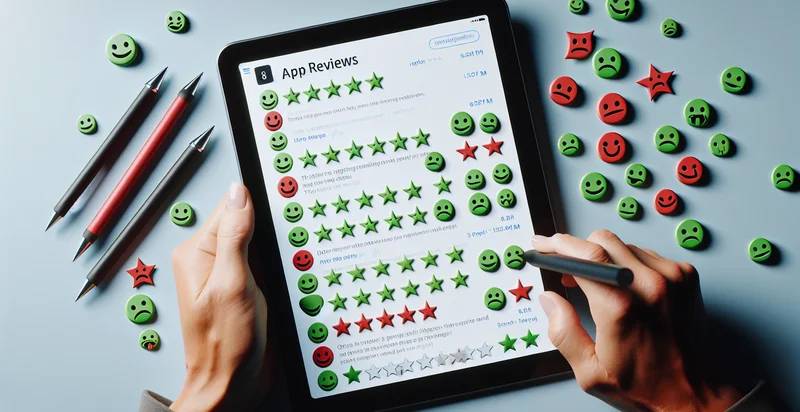Identify app reviews sentiment
using AI
Below is a free classifier to identify app reviews sentiment. Just input your text, and our AI will predict the sentiment of app reviews - in just seconds.

Contact us for API access
Or, use Nyckel to build highly-accurate custom classifiers in just minutes. No PhD required.
Get started
import nyckel
credentials = nyckel.Credentials("YOUR_CLIENT_ID", "YOUR_CLIENT_SECRET")
nyckel.invoke("app-reviews-sentiment", "your_text_here", credentials)
fetch('https://www.nyckel.com/v1/functions/app-reviews-sentiment/invoke', {
method: 'POST',
headers: {
'Authorization': 'Bearer ' + 'YOUR_BEARER_TOKEN',
'Content-Type': 'application/json',
},
body: JSON.stringify(
{"data": "your_text_here"}
)
})
.then(response => response.json())
.then(data => console.log(data));
curl -X POST \
-H "Content-Type: application/json" \
-H "Authorization: Bearer YOUR_BEARER_TOKEN" \
-d '{"data": "your_text_here"}' \
https://www.nyckel.com/v1/functions/app-reviews-sentiment/invoke
How this classifier works
To start, input the text that you'd like analyzed. Our AI tool will then predict the sentiment of app reviews.
This pretrained text model uses a Nyckel-created dataset and has 15 labels, including Appreciative, Constructive, Critical, Dissatisfied, Enthusiastic, Indifferent, Mixed, Negative, Neutral and Optimistic.
We'll also show a confidence score (the higher the number, the more confident the AI model is around the sentiment of app reviews).
Whether you're just curious or building app reviews sentiment detection into your application, we hope our classifier proves helpful.
Related Classifiers
Need to identify app reviews sentiment at scale?
Get API or Zapier access to this classifier for free. It's perfect for:
- Market Analysis: Businesses can leverage the 'app reviews sentiment' identifier to analyze customer feedback trends in various app marketplaces. By classifying sentiment across reviews, companies can identify strengths and weaknesses in their competitors' offerings, allowing them to tweak their marketing strategies accordingly.
- Product Improvement: Developers can utilize sentiment analysis to gauge user feedback on their apps. By understanding the emotional tone of reviews, they can prioritize enhancements or fix specific issues that detract from user experience, ultimately leading to more satisfied customers.
- User Engagement Strategy: Companies can use the identified sentiment from app reviews to tailor user engagement strategies. Positive sentiment can prompt efforts to cultivate brand loyalty, while negative sentiment might trigger outreach to resolve issues and improve perceptions.
- Customer Support Enhancement: Businesses can employ sentiment classification to optimize customer support operations. By analyzing sentiment in reviews, they can identify recurring problems and address them proactively, thus minimizing negative user experiences and improving overall satisfaction.
- Reputation Management: The sentiment identifier can assist in monitoring brand reputation over time. By tracking shifts in review sentiment, companies can respond to PR crises promptly and adjust their branding strategies to maintain a positive public perception.
- Content Moderation: Organizations can integrate sentiment analysis into their content moderation tools for app reviews. This feature can flag reviews with negative sentiment for further review, allowing teams to take appropriate action, such as addressing spam or inappropriate content.
- Marketing Campaign Evaluation: Businesses can assess the effectiveness of marketing campaigns through the analysis of app review sentiment before and after a campaign launch. This insight helps to determine how consumer perception has shifted, informing future marketing initiatives and strategies.


